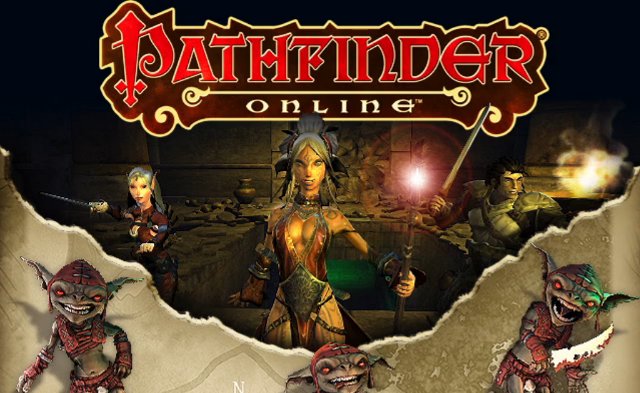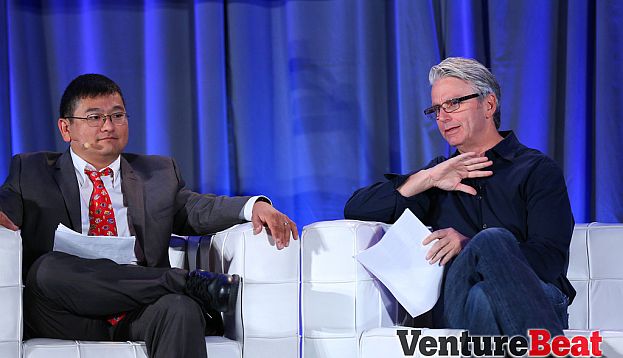The GamesBeat conference last week showcased a wide variety of speakers in the game industry, covering topics ranging from advertising to technology to design. The [a]list daily was there, and we’ll look at some of the highlights from the presentations. Industry leaders discussed the present and the future, and the show wrapped with a contest for the most innovative game.
The next billion-dollar investment opportunity in the game industry was discussed by a panel of seasoned venture capitalists, who agreed that Asia is where the money is coming from. Tim Merel of Digi-Capital said that eight out of the ten largest transactions this year came out of Asia. “Scale is driving that,” Merel said, noting the increasing size of Asian game companies like Tencent and the ready availability of capital in Asian markets.
Panelists agreed that while wearable computing holds interesting prospects, messaging software is rapidly becoming an important gaming platform in Asia — and may soon replicate that in Western markets. “Six of the top ten games in South Korea are based on KakaoTalk,” said Merel. Lars Buttler, former CEO of Trion Worlds and now a venture capitalist, noted that “A whole new ecosystem is being created around messaging,” with WeChat, QQmessenger, Line, and KakaoTalk creating massive audiences and hundreds of millions in game revenues.
What was billed as a showdown of Intuition vs. Analytics between game design and analytics, featuring Rumble Entertainment CEO Greg Richardson and Mark Robinson, COO of GameAnalytics, turned out to be mostly agreement that the two should work together. “It’s not ‘versus,’ it’s ‘and,'” said Robinson. “We need to get these two great skill sets working together. Creatives pick the right hill to conquer, and if you get 70 percent of the way up analytics can get you the rest of the way.”
Richardson advised collecting all the data you can, and invest in analyzing your own data rather than relying entirely on third parties. “What occurs to you when analyzing the data is asking the harder questions, and there you run into constraints” if you rely on third-party analysis. Richardson noted the importance of good design and analytics working together, and that we still haven’t turned that into great games very often. “Forty or fifty thousand mobile games have been introduced,” Richardson said, “But how many are classics you’ll remember in ten years A handful.” The mobile game industry has been good at building game companies, but not so good at building lasting game franchises.
On the topic of Asia’s Growing Influence on the US Game Industry, Nexon’s CFO Owen Mahoney discussed how the US game industry seems to be moving towards the business model created by Nexon. That would be the free-to-play model pioneered by Nexon, along with the sale of virtual goods. It’s been very successful for Nexon, and Mahoney points tot he company’s 40 percent operating margins and annual growth of 25 percent as proof of that contention. “About 10 percent of Nexon users pay, and they pay $20 per month on average,” Mahoney noted. He cited the need to be patient with free-to-play games, and to build deeply immersive games, which “tend to keep their users for a very long time.” His hope, and his message for Western game companies: “Don’t make junk.”
Ex-Electronic Arts CEO John Riccitiello has adopted a much higher profile lately as a game investor, and he spoke about why Mobile vs. Console is not the right question to ask. Riccitiello feels both will do well, and that all segments of the game industry are growing in every major geography. “We’ve seen periods where this is not true,” Riccitiello noted. The only major segment that’s down is the pay-to-play MMO, which is exemplified by World of Warcraft and the continuing erosion of its subscriber base. He noted that console usage among hard-core gamers has remained constant — “People who play every week on their console was 30 percent last year and 29 percent this year, so console usage is about the same,” he said. “It’s harder to make money for any but the biggest brands, but the biggest brands are making more.”
Queried about whether console gaming will survive, Riccitiello was bullish. “I think gaming in your living room isn’t going away any time soon,” he said. “We’ve gone from 200-300 million gamers to 1.2 billion gamers globally.” Of course, those gamers may or may not be playing on a traditional console in the future. He does, however, expect 20 to 30 percent growth in console software sales in 2014.
An interesting combination on stage later in the morning was veteran designer Will Wright and Wargaming CEO Victor Kislyi. Wright interviewed Kislyi, speaking as a tremendous fan of World of Tanks, looking for some insight as to how you build a game that attracts a huge, engaged game audience. For one thing, Kislyi is targeting a game for older guys. “A grownup comes back from work, so he has dispensable income, and he has a half hour before he goes to sleep. He can’t do World of Warcraft,” Kislyi pointed out.. “Our limit was 15 minutes, you jump in and jump out” and get a vigorous workout in that time.
One of the keys to Wargaming’s success is its focus on community. Kislyi noted that the company has 2200 employees now, and half of them work in customer service and community toles. “Half your business is listening to the customer,” Wright said. “We tried to do this from Eastern Europe, but it didn’t work — we needed to be in the different areas,” Kislyi said, explaining the wealth of regional offices that Wargaming has set up around the world.

The big focus of GamesBeat’s second day was the Who’s Got Game Innovation Showdown, where seven different game companies briefly presented their games to a panel of judges. The winner received a Virtuix Omni, personal counseling from expert game industry advisors, and a nifty additional selling point for their game. The games presented showed a broad range of innovation in platform, design, business models and subject matter.
Goblinworks showed off Pathfinder Online, an unusual MMO based on the best-selling fantasy roleplaying game. The game is like EVE Online set in a fantasy realm, where all the players can build or destroy their own part of the world. It’s moving towards beta early in 2014 and full release later in the year. Next up was The Elements Club, an interactive romance adventure that is expressed in a variety of media, including ebooks, interactive ebooks, video, casual games, and social events. There’s a tremendous attention to period detail and a strong focus on the romance fan, but this model is one that creator Karen Snyder plans to use for a wide variety of genres.
Next up was a very different game, oMobio, which uses the camera in mobile platforms as the basis for casual games. The smartphone uses edge detection to create parts of a level, so your selection of what to picture becomes an important part of the game play. It’s like Instagram meets World of Goo. Pixelberry Studios showed High School Story, a social game that founder Oliver Mao hopes can be an important way to help teens deal with social problems before they become too severe. Playground Sessions is a mobile game that’s designed to help you learn to play the piano by picking the pieces you want to learn, using expert video tutoring on piano technique.
RivalMe is a personalized trivia game for Facebook, iOS and Android that selects questions based on your social graph — think of it as Trivia With Friends. The game is also being white-labeled, already in use by UCLA and Shaquille O’Neal. Finally, ZowPow showed off their technology that turns plush toys into gaming controllers — it’s a low-power Bluetooth sensor that can be built into a plush toy you can use as a controller for playing games. ZowPow was declared the winner by the judges, possibly swayed by the sight of using a plush airplane to control a game.

